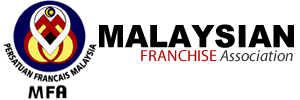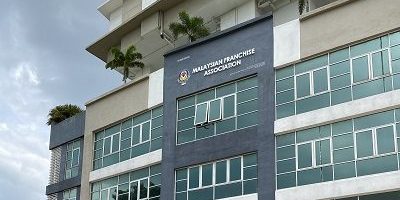CAFÉS not only fulfil the cravings of the coffee addict, but also serve as a place to hang out and socialise for many. In Malaysia, this is evident from the ever-growing list of cafés, whether it is the traditional kopitiam or the latest hipster café with its latte art. Whether you like it black or white, coffee has become part of many people’s lives. The first wave of the local coffee culture rolled in with the opening of Starbucks in 1998.
Berjaya Food Bhd (BFood), which wholly owns and operates the Seattle-based coffee brand in Malaysia, was among the listed companies featured in the 13th edition of RHB Investment Bank’s publication, 2017 Top Malaysian Small Cap Companies — 25 Jewels.
RHB Research analyst Soong Wei Siang tells The Edge that BFood was included on the list for its Starbucks-driven growth story and earnings gains moving forward, as well as narrowed losses from its rationalisation of its loss-making business.
“As at FY2017, all of the businesses apart from Starbucks have recorded losses. I believe earnings will resume growth moving forward,” Soong says, indicating that the worst is over for BFood.
On the local front, there is OldTown Bhd, known for its white coffee, which operates cafés based on the traditional Ipoh coffeeshop setting and ambience under the OldTown White Coffee brand.
Mercury Securities’ research head Edmund Tham tells The Edge that on the back of intense competition in the café chain business, OldTown has switched its focus to its instant coffee mix.
“The companies have a different focus. OldTown’s strength lies in its instant coffee mix now instead of its cafés. The fast-moving consumer goods (FMCG) segment has been driving earnings. As for BFood, the focus remains the same — to provide the Starbucks experience,” Tham says.
According to Hong Leong Investment Bank Research analyst Gan Huan Wen, BFood is expected to continue with its plan to open 25 Starbucks outlets a year.
“We reckon there is still room for growth [in the number of] Starbucks cafés. The outlet penetration ratio [the number of Starbucks outlets per million people] is significantly lower than Singapore and Japan. Additionally, BFood has reported flat same-store sales growth year on year in its latest financial year. In a period of low consumer sentiment and tepid spending, we take it as a positive as we have seen other food and beverage players suffer from low consumer spending,” Gan says. Note that Starbucks raised the prices of many of its products this year too. However, he cites that the group’s loss-making Kenny Rogers Roaster (KRR) Malaysia and Indonesian operations are weighing heavily on earnings.
According to Bfood CEO Sydney Quays, there are 241 Starbucks stores in Malaysia in total as at June 21, including 33 drive-through outlets.
“We plan to open at least 25 stores per year [with 10 drive-throughs if the infrastructure allows it]. There are no specific areas emphasised for new store openings. As long as the location is right, with good prospects, there will be an opportunity for Starbucks to open,” Quays says.
On the strategy to improve KRR’s business, Quays tells The Edge the group will continue to consolidate the store count by closing nonperforming stores and implementing effective cost-saving initiatives, as well as strengthening KRR’s brand presence.
While BFood has closed 11 outlets in Malaysia and seven in Indonesia, it still had 84 Kenny Rogers Roaster restaurants in Malaysia and 16 in Indonesia as at end-April.
OldTown tales
As for OldTown, Gan says the company has closed outlets in unprofitable locations as well, with 234 remaining as at end-March (down from a high of 246 three years ago), 197 of which are in Malaysia.
“We expect them to open eight new stores in the coming year, with a more prudent selection of locations. We expect consumer spending for the rest of the year to stay sluggish, and are therefore unexcited about the opening of new domestic outlets,” he says, adding that the group is also looking at securing area licensing agreements internationally.
“After the expansion of the café division to Hong Kong, Jiangsu Province in China and Myanmar late last year and early 2017, the group is planning to secure further area licensing agreements in Southeast Asia and China going forward. OldTown has already received a letter of Intent for licensing area agreements for three more provinces in China. In the near term, these agreements will not add a great deal to revenue. However, should the reception of the OldTown brand be encouraging, it could provide an avenue for growth in the future,” Gan says.
Another positive growth catalyst for OldTown is the expansion of its FMCG sales in the China market, according to Gan.
In terms of sales, Greater China (Mainland China, Hong Kong and Taiwan) accounted for 45%, or RM105.2 million, of its revenue in the financial year ended March 31, 2017 (FY2017), compared with 36%, or RM72.2 million, of FY2016 revenue. The region has overtaken Malaysia as the No 1 contributor to sales, at RM81.8 million or 35% of FY2017 sales, compared with RM83.8 million or 42% in FY2016. Gan expects exports to China to continue to grow strongly moving forward.
“We have a ‘hold’ call on both companies. In the short term, BFood will continue to struggle with loss-making entities. We reckon OldTown’s growth prospects are already priced in and expectations for its growth from China FMCG sales are already quite high,” he says.
Gan has a target price of RM1.73 for BFood, which closed last Wednesday at RM1.54 and RM2.75 for OldTown, which ended at RM2.70 on the same day.
Changing fortunes for OldTown and BFood
Bfood’s financial results have been in decline since it achieved its highest net profit of RM177.6 million in FY2015. In FY2017, the group only managed a net profit of RM11.3 million after its first ever quarterly net loss of RM3.4 million for the fourth quarter of the financial year ended April 30, 2017 (4QFY2017).
OldTown’s net profit for 4QFY2017, declined 46% to RM9.9 million from RM18.4 million in the corresponding quarter a year ago, mainly due to a one-off provision for doubtful debts related to overdue trade receivables. Nonetheless, the company’s FY2017 earnings have increased 16.3% to RM60.8 million from RM52.3 million in FY2016.
In line with its financial results, BFood’s share price has fallen 8.7% to RM1.53 compared with a year ago, while OldTown’s has surged 55.3% to RM2.70. This is in contrast with the movements of the two companies about three years ago.
Recall that at the end of 2014, BFood’s share price was about double, at above RM3, following news that the company would buy the remaining 50% stake in Berjaya Starbucks Coffee Co Sdn Bhd so it would wholly own and operate the Starbucks franchise in Malaysia. During the same period, OldTown’s share price shed nearly 17% to close at RM1.31 at end-2014.
Fast forward to the present, and BFood has seen about RM500 million of its market capitalisation wiped out from its peak in December 2014, while OldTown’s market capitalisation has gained by more than RM500 million to its current market cap of RM1.26 billion, from less than RM600 million in September 2015.
http://www.theedgemarkets.com/article/will-it-be-starbucks-or-oldtown-white-coffee












